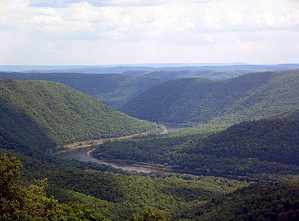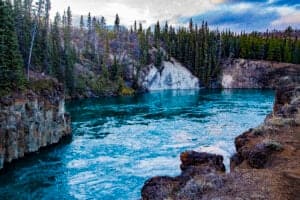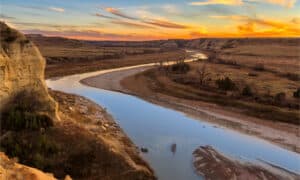The land of the “delta blues” is more than just a lyric from a popular 90’s song. Delta blues is a genre of music that started in the Mississippi River delta in the United States. There’s an airline called Delta, and you may have heard the word as part of a sorority or fraternity name. A river delta has nothing to do with the airline, but it is related to the Greek letter. So, what is a river delta anyways?
River Delta Definition
A river delta is a landform shaped like a triangle. River deltas are created by the deposit of sediment that is carried by a river and enters another body of water that is moving slower. A delta forms when a river meets a slower-moving body of water like an ocean, lake, or reservoir. In rare cases, a delta can form where two rivers meet if the other river does not move fast enough to carry away sediment. In either case, the meeting of these two bodies of water leads to a triangular-shaped piece of land, made up of river sediment. It is called a delta because it matches the triangle shape of the Greek letter, delta.
What Are the Types of Deltas?
There are many different types of deltas.
Arcuate Delta
These types of deltas have more of a fan shape. The Nile River Delta, where the Nile River meets the Mediterranean Sea is perhaps the most well-known example of an arcuate delta. These types of deltas form when there are multiple distributaries—river channels that carry and deposit sediment—from the main river leading to the larger body of water, in this case, the Mediterranean. Other famous examples of arcuate deltas include the Rhine Delta and the Danube Delta.
Bird Foot or Finger Delta
This type of delta has two names – either bird foot or finger. Its shape resembles a bird’s foot, but some people think each distributary can also resemble a finger on a human hand. As the description of the shape suggests, there are just a few distributaries in this type of delta and they are typically spread out. The Mississippi River Delta is a great example of a bird foot delta as it empties into the Gulf of Mexico.
Estuarine Delta
These deltas form when a river empties into an estuary instead of the ocean. An estuary is a type of wetland that is usually found near where a river meets the ocean. It is made up of part salt water and part fresh water (brackish water) and has a unique ecosystem. Estuarine deltas are usually long and narrow. Examples of estuarine deltas include the Hudson River Delta and the Seine River Delta.
Truncated Delta
Since deltas are usually near the sea, waves and the currents of the ocean have the power to modify the land structure of the delta over time. When a delta becomes eroded or dissected by natural forces, altering its typical triangular shape, it is called a truncated delta.
Blocked Delta
A delta is said to be blocked when it can not grow any further out into the ocean due to waves or ocean currents. Another reason a delta can become blocked from further growth is if the availability of sediment changes. Usually, that is either due to human activity or changes in the climate.
Abandoned Delta
The location of a river’s mouth can change depending on several factors. Water always follows the path of least resistance. So, if sediment builds up over time and makes more resistance than another path, the river will change course, leaving the previous delta out. When this happens, the previous delta is said to be abandoned. The Yellow River in China and the Ganga River in India both have abandoned deltas.
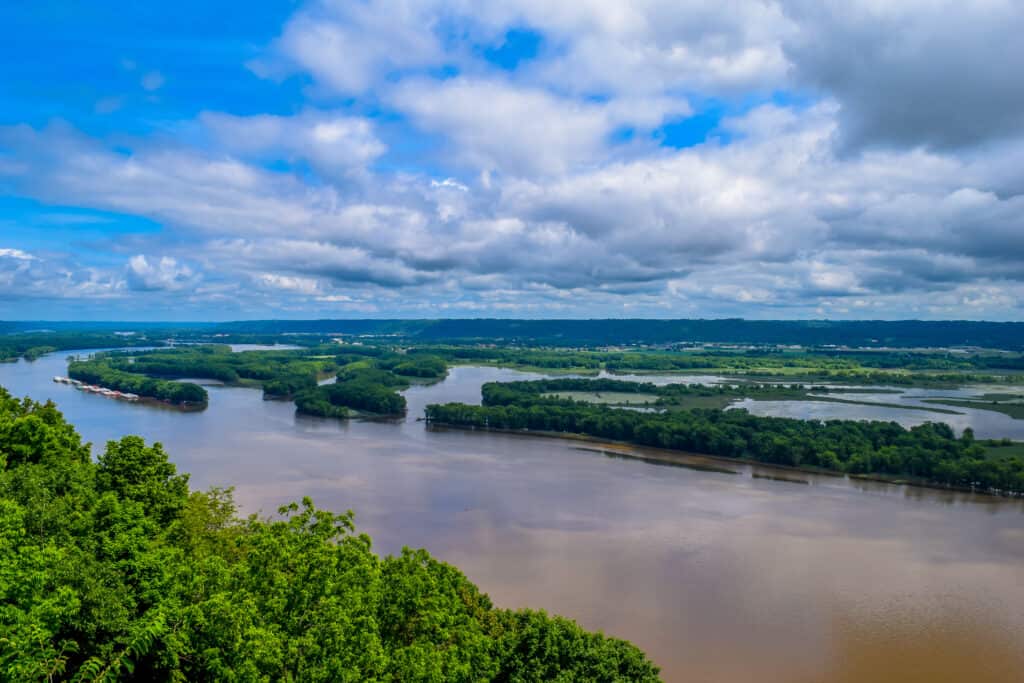
The Mississippi River Delta is a good example of a bird foot delta.
©EyeTravel/Shutterstock.com
Type Based on Formation Method
In addition to the above-mentioned types of deltas, there are also several different ways deltas are formed:
- Fluvial-dominated: The river determines the shape of the delta and the type of sediment found within it. What determines this is whether the density of the river water is less than, the same as, or greater than the density of the body of water it’s flowing into. The Mississippi River is an example of a fluvial-dominated delta.
- Wave-dominated: Waves are the primary factor that brings in sediment to form the delta. Waves can also take away sediment, causing the delta to get smaller.
- Tide-dominated: In tide-dominated deltas, low tides bring sediment out to sea, but high tides and storm surges bring in more to form the delta. Tide-dominated deltas are usually smaller than other types.
- Tidal freshwater: These occur between a stream and an estuary. There are many tidal freshwater deltas leading to Chesapeake Bay.
- Estuaries: Sometimes, when a river meets an estuary, no delta is formed and the estuary opens into the sea. The St. Lawrence River is an example of this.
- Inland: When a river runs over an ancient lake bed, it will often split up into multiple streams or tributaries before rejoining and continuing to the ocean. These areas are called inland deltas. The California Delta is an example of a large inland delta.
Deltas’ Importance to Human Civilization
Deltas have been important in human history. Historians believe that it was in a fertile river delta in Mesopotamia where humans first learned to harness the power of water for irrigation in agriculture. It makes sense because they are very fertile, green, and lush areas. The area where Mesopotamia arose is known as the Fertile Crescent because of how fertile it was. There is evidence of human agricultural activity dating back to 9000 BC in this region, which includes parts of Iraq, Syria, Lebanon, Palestine, Jordan, Israel, Egypt, Kuwait, Turkey, and Iran.
The stability brought on by agriculture allowed culture to flourish. It is in this area that we see the first evidence of libraries, domesticated cats, and the written word.

Writing first emerged in river delta civilizations out of Mesopotamia.
©Saga Photo and Video/Shutterstock.com
River Delta Ecology
Deltas are typically wetland environments with a lot of biodiversities. Since there are different types of deltas all over the globe, they don’t typically have the same plants or animals. Deltas are the source of plants like hibiscus and medicinal herbs used in many cultures. Many different animals can be part of a delta ecosystem from the little guys up to the predators. Oysters, fish, and shellfish are common. However, bears, alligators, and tigers may be present too, depending on the country!
Each delta is a uniquely balanced ecosystem, and many of them are at risk from human activity, climate change, or both. For example, the Mississippi River Delta is losing land at an alarming rate of about a yard (three feet) per minute. This is due to sea level rise, hurricane storm surges from notable storms like Katrina, and human activities like levees, dams, and shipping channels.
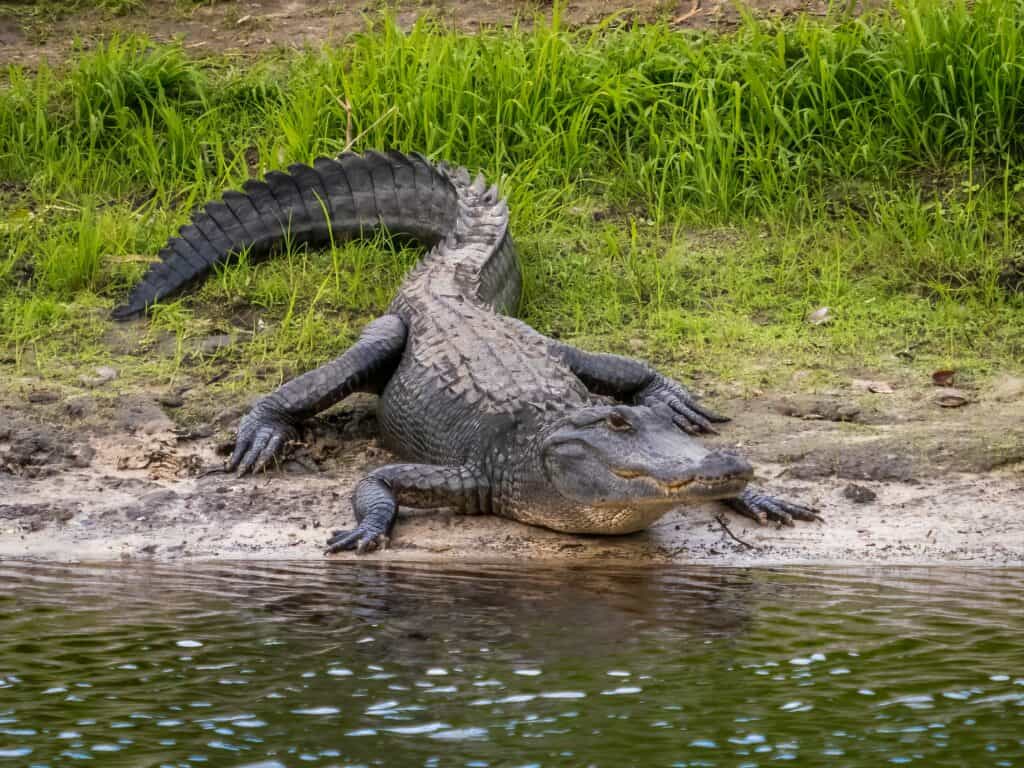
Alligators can sometimes be found in river deltas.
©Jim Schwabel/Shutterstock.com
Why Are River Deltas Important?
River deltas are important because they are home to many people, and to a lot of our world’s agricultural production. Similar to the fertile crescent, today’s deltas are often ideal places for civilization. They are flat, full of water, and close to the ocean which makes it easier to trade products grown in the region. An example of a modern important river delta is the Yangtse River Delta which includes the Chinese city of Shanghai.
Another reason these areas are important is due to the fact that they help to supply the world with sand and gravel. Older deltas are often turned into quarries for sand and gravel to be used in construction, paving, and landscaping. These areas are powerful for this purpose because deltas naturally sort the sediment into sand and gravel in different areas, so a large part of the job is done already!
River deltas also help to protect the coastline from erosion and can help to keep local drinking water supplies safe and plentiful.
Some experts predict that with a warming climate and a rising sea level, many river deltas will be underwater and/or have a great reduction in the amount of sediment flowing to them in the coming years. Experts advise that policymakers need to find a compromise between sustainability practices and commercial agriculture to preserve deltas as much as possible for the time being.
Learn More…
River Vs. Channel: Are They The Same Thing?
What Is a Tributary? A Full Guide
The photo featured at the top of this post is © lavizzara/Shutterstock.com
FAQs (Frequently Asked Questions)
What Is The Definition of A River Delta In Geography?
A delta forms when a river meets a slower-moving body of water like an ocean, lake, or reservoir. In rare cases, a delta can form where two rivers meet if the other river does not move fast enough to carry away sediment. In either case, the meeting of these two bodies of water leads to a triangular-shaped piece of land, made up of river sediment. It is called a delta because it matches the triangle shape of the Greek letter, delta.
What Are the Types of Deltas?
There are many different types of deltas.
Arcuate Delta
These types of deltas have more of a fan shape. The Nile River Delta, where the Nile River meets the Mediterranean Sea is perhaps the most well-known example of an arcuate delta. These types of deltas form when there are multiple distributaries—river channels that carry and deposit sediment—from the main river leading to the larger body of water, in this case, the Mediterranean. Other famous examples of arcuate deltas include the Rhine Delta and the Danube Delta.
Bird Foot or Finger Delta
This type of delta has two names – either bird foot or finger. Its shape resembles a bird’s foot, but some people think each distributary can also resemble a finger on a human hand. As the description of the shape suggests, there are just a few distributaries in this type of delta and they are typically spread out. The Mississippi River Delta is a great example of a bird foot delta as it empties into the Gulf of Mexico.
Estuarine Delta
These deltas form when a river empties into an estuary instead of the ocean. An estuary is a type of wetland that is usually found near where a river meets the ocean. It is made up of part salt water and part fresh water (brackish water) and has a unique ecosystem. Estuarine deltas are usually long and narrow. Examples of estuarine deltas include the Hudson River Delta and the Seine River Delta.
Truncated Delta
Since deltas are usually near the sea, waves and the currents of the ocean have the power to modify the land structure of the delta over time. When a delta becomes eroded or dissected by natural forces, altering its typical triangular shape, it is called a truncated delta.
Blocked Delta
A delta is said to be blocked when it can not grow any further out into the ocean due to waves or ocean currents. Another reason a delta can become blocked from further growth is if the availability of sediment changes. Usually, that is either due to human activity or changes in the climate.
Abandoned Delta
The location of a river’s mouth can change depending on several factors. Water always follows the path of least resistance. So, if sediment builds up over time and makes more resistance than another path, the river will change course, leaving the previous delta out. When this happens, the previous delta is said to be abandoned. The Yellow River in China and the Ganga River in India both have abandoned deltas.
Type Based on Formation Method
In addition to the above-mentioned types of deltas, there are also several different ways deltas are formed:
- Fluvial-dominated: The river determines the shape of the delta and the type of sediment found within it. What determines this is whether the density of the river water is less than, the same as, or greater than the density of the body of water it’s flowing into. The Mississippi River is an example of a fluvial-dominated delta.
- Wave-dominated: Waves are the primary factor that brings in sediment to form the delta. Waves can also take away sediment, causing the delta to get smaller.
- Tide-dominated: In tide-dominated deltas, low tides bring sediment out to sea, but high tides and storm surges bring in more to form the delta. Tide-dominated deltas are usually smaller than other types.
- Tidal freshwater: These occur between a stream and an estuary. There are many tidal freshwater deltas leading to Chesapeake Bay.
- Estuaries: Sometimes, when a river meets an estuary, no delta is formed and the estuary opens into the sea. The St. Lawrence River is an example of this.
- Inland: When a river runs over an ancient lake bed, it will often split up into multiple streams or tributaries before rejoining and continuing to the ocean. These areas are called inland deltas. The California Delta is an example of a large inland delta.
Thank you for reading! Have some feedback for us? Contact the AZ Animals editorial team.



